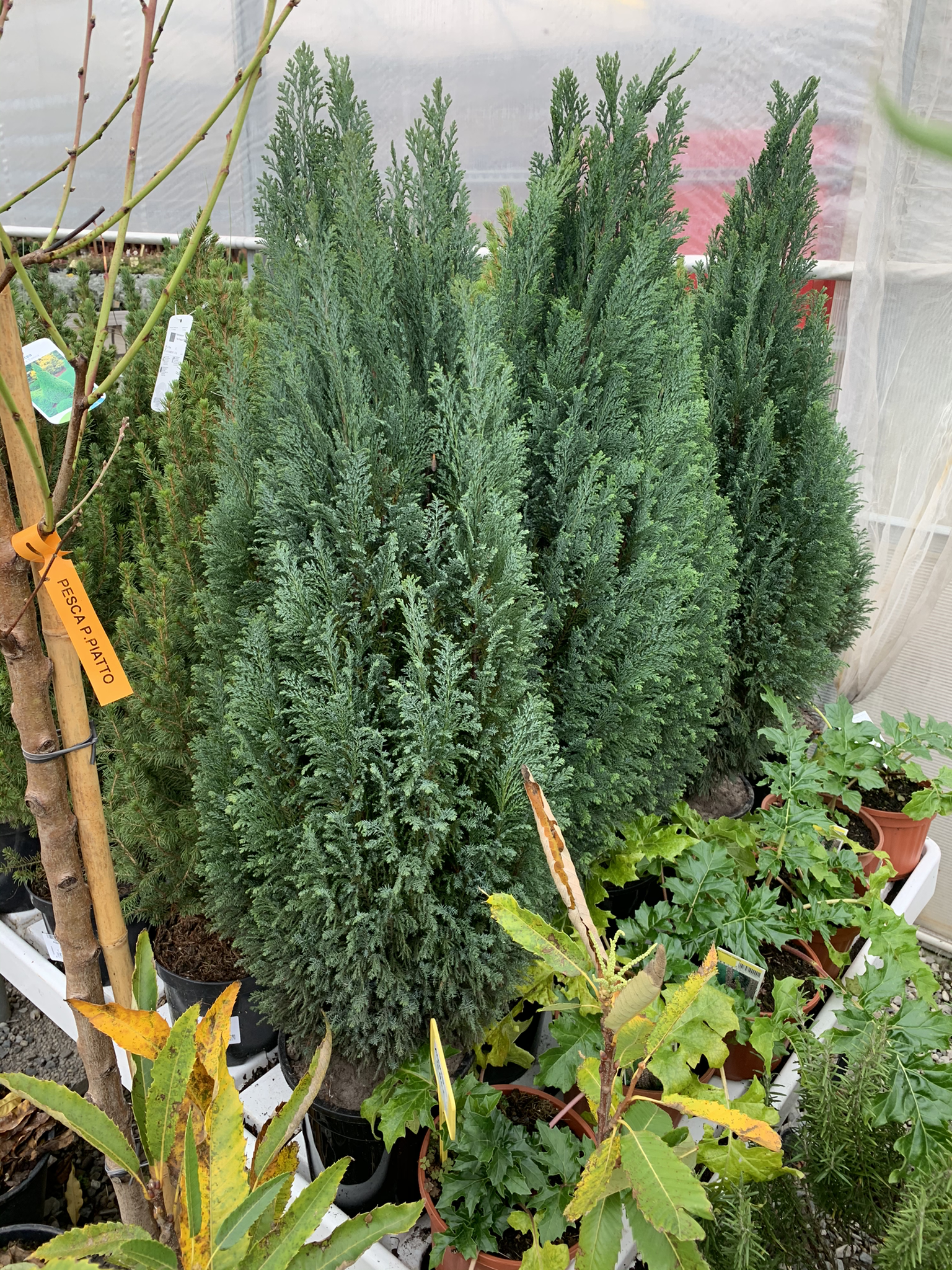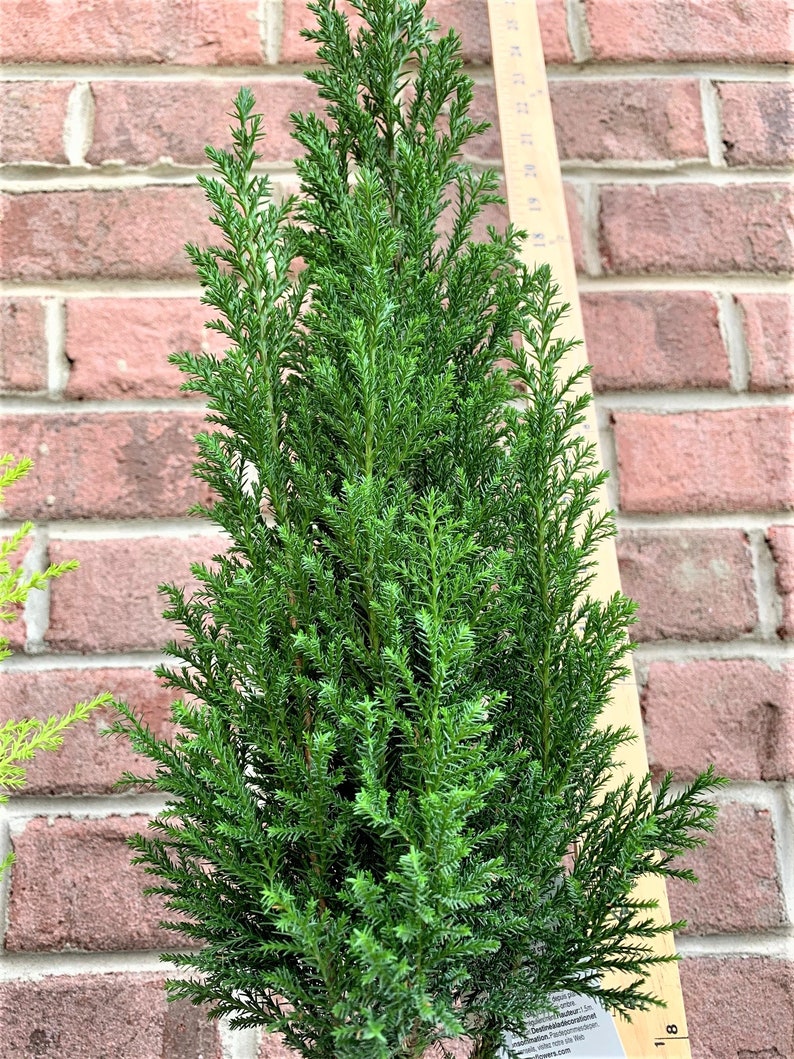Ellwoodii Indoor Plant: Care and Growing Tips

Welcome to our comprehensive guide on caring for Ellwoodii (Chamaecyparis lawsoniana), a captivating evergreen shrub that thrives as an indoor plant.
In this guide, we will explore the essential steps to ensure the health and vibrancy of your Ellwoodii.
From ideal placement and watering requirements to soil preferences, light conditions, and pest management, we'll provide expert advice to help your Ellwoodii thrive in your indoor space.
What is Ellwoodii Plant?
Ellwoodii is a cultivar of Chamaecyparis lawsoniana, known for its slow-growing nature and remarkable foliage.
This compact evergreen shrub features scale-like, aromatic foliage in shades of grey-green to blue-green, adding a lush and vibrant touch to any indoor setting.
With its columnar shape and compact growth, Ellwoodii is well-suited for small spaces like tabletops, shelves, or mixed indoor plant arrangements.
Care Tips for Ellwoodii Indoor Plant

Placement:
Choose a room that receives bright, consistent light for your Ellwoodii.
Place it near a window with a sheer curtain to provide filtered sunlight.
To ensure even growth, rotate the plant every few months if it starts leaning towards the light.
Watering:
Water your Ellwoodii moderately, allowing the top inch (2.5 cm) of soil to dry out between waterings.
When watering, ensure the soil remains damp but not soggy.
Thoroughly water the plant until water drains from the bottom of the pot.
Avoid overwatering to prevent root rot, but also prevent the soil from drying out completely. During winter, slightly reduce the frequency of watering.
Soil Requirements:
Plant your Ellwoodii in moist, well-drained soil. While it can tolerate chalk soils, it prefers slightly acidic soil.
A suitable soil mixture can include peat moss, perlite, and compost. Good drainage is crucial to prevent waterlogged soil, which can harm the plant's roots.
Temperature and Humidity:
Ellwoodii thrives in average room temperatures ranging from 60-75°F (15-24°C).
It can tolerate slightly cooler temperatures down to 50°F (10°C) during winter. Standard indoor humidity levels of about 40%-60% are suitable for this plant.
Sunlight:
Place your Ellwoodii in a location that receives bright, indirect sunlight for 6-7 hours a day.
It can tolerate some direct sunlight, especially during the morning or late afternoon.
Avoid intense, full sun exposure, as it may scorch the foliage.
Feeding:
Use a balanced liquid fertilizer designed for foliage plants and apply it monthly during active growth.
Follow the package directions to determine the appropriate amount and frequency of feeding.
Avoid excessive fertilizer application, as it can damage the plant.
Pruning:
Regular pruning of container plants is essential to maintain their desired size and shape.
Pruning promotes a tidy appearance, stimulates lateral branch growth, and minimizes the need for extensive root development.
Trim the foliage carefully to manage the plant's growth within the limited space of the container.
Unhealthy Plant Signs:
Over or under-watering can cause the plant to lose its needles, while browning may indicate overwatering.
Monitor the plant closely and adjust your watering practices accordingly.
Toxicity:
Ellwoodii may cause a harmful reaction in pets if ingested, so it's important to keep it out of their reach.
Troubleshooting and Common Pests/Diseases

Yellowing Foliage:
- Possible Cause: Overwatering or underwatering.
- Solution: Check soil moisture levels. Adjust watering to keep the soil evenly moist, but not waterlogged. Avoid letting the soil dry out completely between waterings.
Stunted Growth:
- Possible Cause: Insufficient light or nutrient deficiency.
- Solution: Ensure the plant receives adequate indirect sunlight. Consider using artificial grow lights if needed. Feed with a balanced liquid fertilizer to provide essential nutrients.
Pest Infestations:
- Common Pests: Ellwoodii may occasionally be affected by spider mites or aphids.
- Signs of Infestation: Look for webbing, tiny insects, or distorted leaves.
- Solution: Regularly inspect the plant for signs of pests. Use insecticidal soap or neem oil to control infestations. Ensure good airflow around the plant to deter pests.
Potting and Repotting Ellwoodii
When to Repot: Repot every 2-3 years or when the roots become crowded and fill the current pot.
Choosing the Right Pot: Select a pot one size larger than the current pot, with drainage holes to prevent waterlogging.
Potting Mix: Use a well-draining potting mix suitable for indoor plants, such as a blend of peat moss, perlite, and compost.
Repotting Process:
- Gently remove the plant from its current pot, being careful not to damage the roots.
- Shake off excess soil and inspect the roots for damage or rot. Trim any dead or damaged roots.
- Place a layer of fresh potting mix in the new pot and position the plant in the center.
- Fill the remaining space with potting mix, ensuring the plant is at the same level as before.
- Lightly press down the soil to secure the plant.
- Water thoroughly and allow any excess water to drain away.
Conclusion
In conclusion, by following the care tips outlined in this guide, you can ensure that your Ellwoodii (Chamaecyparis lawsoniana) indoor plant thrives in your home.
From providing suitable placement with bright, indirect sunlight to maintaining proper watering, soil conditions, and regular maintenance, you'll create an optimal environment for your plant to flourish.
Remember to monitor for common issues like yellowing foliage or stunted growth, address pest infestations promptly, and consider repotting every 2-3 years or as needed.
With these guidelines, you'll be able to enjoy the beauty and serenity of your Ellwoodii as it adds a vibrant touch to your indoor space.
